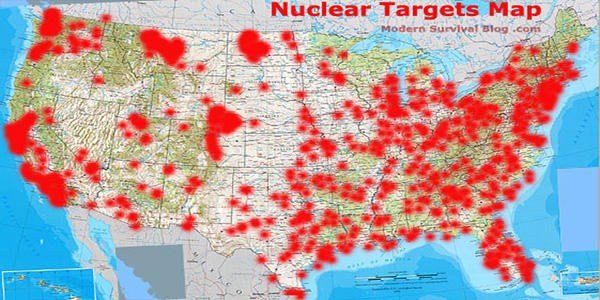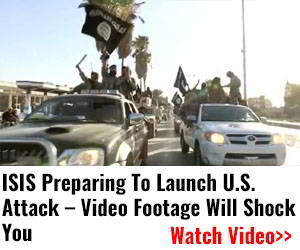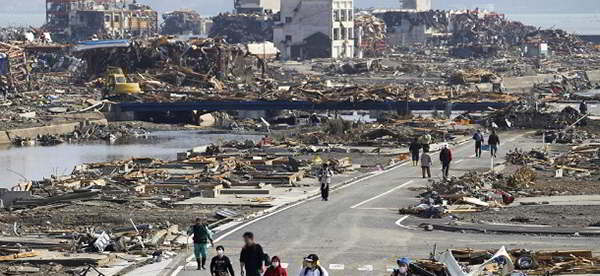Nuclear war isn’t something a lot of people worry about these days. After all, the Cold War is over, right? Well, with what has been going on with Russia and the Ukraine over the past couple of years, it looks as though the Cold War is firing up again, not to mention the fact that terrorism is occurring at an accelerated rate across the globe. And then there is the threat of North Korea’s nuclear development, which if real, is something to concern us all.
With all of this going on around us, your world is not without the threat of nuclear war. What if one happened tomorrow? Would you be ready? Would you know what to do? While most people think it’s ridiculous to prepare for a nuclear war, what harm is there in it? If it doesn’t happen, then it’s no biggie, right? And if it does happen, then you will be a lot better off than everyone else. However, chances are you don’t have a state-of-the-art bunker set up in your backyard. How do you prepare if you don’t?
The Dangers
The danger from a nuclear blast will depend on where you are when it hits. Most small countries and terrorist groups would be able to produce a nuclear attack of up to 10 kilotons, so it is best to plan for this at a minimum. Anyone at ground zero, where the fireball goes up, would be incinerated. There is simply no effective protection at ground zero. Up to ¾ of a mile away, anyone exposed would receive a lethal dose of radiation. Up to a mile away, anyone exposed would receive second-degree burns from the blast.
 Once you get beyond that distance, you have a better chance of survival. But you also need to take into account prevailing winds and wind direction and speed on the day. Here are some overall tips on the dangers of a nuclear blast:
Once you get beyond that distance, you have a better chance of survival. But you also need to take into account prevailing winds and wind direction and speed on the day. Here are some overall tips on the dangers of a nuclear blast:
- The size of the detonation will affect the amount of radioactive fallout, although the rate of decay is the same, regardless.
- Wind can carry radioactive fallout for hundreds of miles and a lethal dose can be carried as far as 6 miles. You should know whether you live in an area likely to receive fallout if a major target is hit. You can refer to Wikimedia Commons, which shows a fallout map published by FEMA.
- The height at which the device is detonated will affect the effect of the blast.
- If the device is detonated above the ground, it could result in an electromagnetic pulse (EMP), wiping out the power grid.
Major targets include:
- Military bases and strategic missile sites
- Centers of federal and state governments
- Critical communication and transportation centers
- Financial, technology, industrial, and manufacturing centers
- Electrical power plants, chemical plants, and oil refineries
- Major airfields and ports
If you are near any of these, your risk of death or exposure will increase significantly. The further you live away from large cities, military bases, and other targets, the safer you will be.
 Plan Ahead
Plan Ahead
First and foremost, you should plan ahead, so you know what to do if there is ever a nuclear attack near you. You must consider where you would go, who would go with you, how you would get there, and how to stock it ahead of time.
If you plan on evacuating, you need to be certain that you can make it to your bugout location. If you get caught out in the open, you risk being exposed to the fallout. If you can evacuate safely, don’t hesitate.
If you are staying, the most important thing to remember when protecting yourself from a nuclear blast is:
The more layers of heavy, dense material you have between you and the fallout the better. The best materials are:
- Steel
- Concrete or brick
- Earth
- Water
- Wood
For this reason, you need to get yourself somewhere that will offer you some protection. You can contact your city officials to see if there are any fallout shelters in your city. If so, you can head there, but if not, consider preparing your basement. Your basement automatically offers you some protection. In the basement of a two-story brick house you will receive 1/20th of the radiation as a person who is exposed outside.
Your Home
However, you can take measures to fortify your basement. Choose a corner of your basement and build a small room. Use any of the above materials to construct a second and even third wall inside your basement wall. Completely enclose the space. You can use concrete blocks, sand bags, and bricks. This will add additional protection and it is a space you can stock with whatever you will need for the time you must stay protected.
If you don’t have a basement, perhaps you live in an apartment building or your house has no basement, take the following into consideration:
- Choose the tallest concrete buildings you can get to within a few minutes.
- Go to the basement of the building, if possible.
- If you cannot get to the basement, then next best location is in the center of the building, halfway up and in the hallways, away from the sides of the building. You want as many layers of steel and concrete as possible between you and the outside.
- Stay inside for at least the first 24 hours (unless the authorities direct you to evacuate), during which the radiation levels will be at their highest (80% of the fallout occurs during this time).
- Be prepared to stay inside for as long as two weeks in areas that are the most affected by radiation.
If you go to a nearby building, you will only have a few minutes to get there before the fallout hits and you will need food, water, medical supplies, a source of light, a knife, and a radio at the very least. A crowbar is useful, too, in case you need to pry open doors to gain access to the building. Have these things packed and ready, so that when a nuclear emergency strikes, you can grab your bags and go.
Being prepared for a nuclear attack is the smart thing to do, especially with all the conflict going on in the world today. Plan ahead, so that you and your loved ones can survive a nuclear attack and help rebuild society. One day, you might be thanking your lucky stars you did.
You may also like:
 How Much Does a Nuclear Bunker Cost?
How Much Does a Nuclear Bunker Cost?
This Bug Will Kill Most of the Americans during the Next Crisis (Video)
Why is Pentagon in a Hurry to Move back to the Nuclear Base under the Cheyenne Mountain?















“Most small countries and terrorist groups would be able to produce a nuclear attack of up to 10 kilotons….” Karen …. where does that statement come from?
North Korea just detonated a 10 kt bomb according to the folks who watch such things. Theoretically Iran doesn’t have any atomic weapons. China, Pakistan, India, France, Russia, Israel all have atomic weapons. While I haven’t kept track of just how big they are, inasmuch as a 10 kt bomb is not that big, I am sure they have something in the 10 kt range.
Considering how vague the Ruskies are about where all their atomic devices are, it wouldn’t surprise me if some enterprising terrorist group with a big budget, say one financed by the Saudis would be able to purchase a 10 kt or larger atomic device. Delivery would be the only problem but it is easily solvable which I won’t go into here.
Your point is taken however, Karen uses “most” ….which I disagree with. China, Pakistan, India, France, Russia are not small countries. Israel might be if you carve off the part that starts with USA.
Thanks for your feedback Farmer. The source I got the information from actually said 1 kt-10 kt, so perhaps better wording would have been “most could develop nuclear bombs of 1 kt and some could potentially develop nuclear bombs of as much as 10 kt.” I poked around and here is a link to a Belfer Center Harvard Q&A that does state it is possible for terrorist groups to make a bomb that has thousands of tons of explosive power — “Unclassified estimates suggest that basic first-generation implosion-type bombs like the Nagasaki bomb can be made with 6 kilograms of plutonium or 15 kilograms of HEU. With these relatively small amounts, a terrorist group could potentially build a bomb with the power of thousands of tons of high explosive.” Here is the link: http://belfercenter.ksg.harvard.edu/publication/17529/nuclear_terrorism_faq.html
OK article but as usual it glances over the types of nuclear detonations and the effectiveness of the various effects. Recommend reading this to get a better understanding. http://www.thesurvivalistblog.net/types-and-effects-of-nuclear-weapons-the-basics/
I live in the country in a wood home in North Texas,close to Dallas. We cannot dig the ground here to put in a root cellar much less a bunker of any kind. What would be the best way to fortify our home against Nuclear fallout ?
gtonanna,
If you can’t go underground, or more likely can’t afford the heavy equipment to dig down through the rocky Texas Soil, (I know because I have a house outside of Ft Worth) – then one must build aboveground.
There are some plans by FEMA and others which can be found, but the basic idea of an above ground nuclear shelter is to build a reinforced dome type structure out of steel and concrete and cover it with as much soil as possible (2-3 feet would be good depending on how thing the reinforced concrete was). The dome shape will give good all around support and is better shaped to allow any strong winds to pass over and around structure rather than tear it apart which is what can happen with traditional vertical building walls.
Make sure the domes structure has a sealed entrance from the outside which enters into a chamber which can be closed off from the outside and also can be closed and sealed off from the interior area(s) as well.
This chamber is where you would do any decontamination prior to going into the main living space, and also allow a place to get dressed when preparing to go outside after the radiation has decayed to a relatively safe level.
Some sort of shower in the entrance chamber would be good so that one could remove any clothes which may be contaminated by fallout and allow you place the contaminated clothes in a sealed bag until they can be washed. After undressing the person entering would then shower to rinse off any fallout that may be on their skin or in their hair. After showering, the person could then dress in clean clothes prior in entering the main living area(s).
Inside the main living area(s) there should be a source of water, food and a place to prepare it (and a way vent to the outside any CO2 from the fire ) and most important of all – a way to pump clean, filtered air into the bunker so every one can breath.
In order to do all of that you will need some sort of independent electrical source to run the lights, water and air pump at a minimum. A battery bank would probably be preferable as it would not pose the CO2 hazard that a gas/diesel generator would. However, having a generator that could be placed outside and plugged into the bunker to run the systems and recharge the batteries could also be built. A separate smaller shelter could be built for that purpose which could allow someone to dress appropriately after about a week, to go there and start the generator and allow it to run and recharge the batteries for the next week. IF the bunker was large enough, a separate generator/ utility room could be built inside the shelter, but the generator MUST be vented to the outside when running so to avoid carbon monoxide/carbon dioxide poisoning.
It would take a lot of planning to get the shelter right, but it can be done with a lot of planning and hard work.
what happens if some of the nuclear power plants along the American or Canadian seaboard goes into melt down due to weather storm or other problems shouldn’t we prepare for that? regards huntsalone